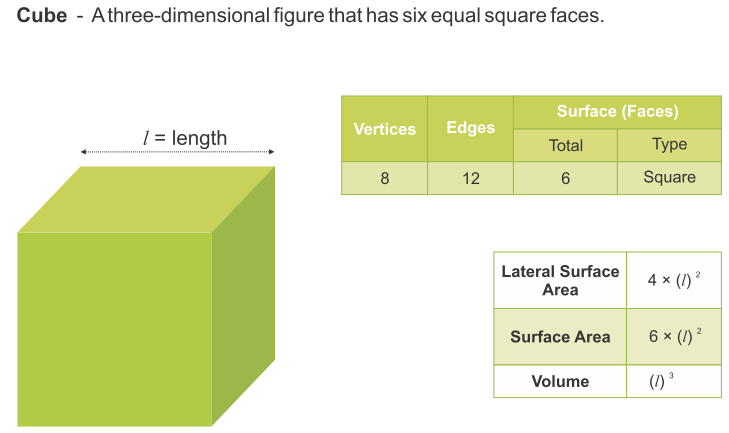In the realm of geometry, where intricate shapes dance and mathematical principles unfold, the cube stands as an elementary yet captivating object. Its cubic form intrigues, inviting us to explore its secrets. Today, we embark on a journey to unravel the mysteries of surface area and volume, revealing the power of these geometric measures.

Image: www.aplustopper.com
Introduction:
Embark on a journey into the captivating world of cubes and delve into their intriguing characteristics. Imagine yourself as a budding architect, tasked with designing a grand structure made entirely of cubes. To plan your masterpiece, you must possess the knowledge to calculate the surface area of each block, ensuring the exterior will be impeccable, and the volume, determining the interior space available. Our exploration today will provide you with the tools to tackle this task with confidence.
Surface Area: A Cloak of Measure
Envision a single cube, its sides forming a square face. The surface area, the total area covering the cube’s exterior, is equal to the sum of all six square faces. Imagine unfolding the cube into a two-dimensional net, revealing each square face. The surface area can be calculated by adding the area of each individual square.
Surface Area Formula:
Area of one square face = s²
Surface Area = 6 * s²
Where ‘s’ represents the length of one side of the square face.
Volume: A Measure of Inner Space
Unlike the surface area, which measures the exterior, volume delves into the inner depths of the cube, revealing its capacity to hold space. Imagine filling the cube with tiny cubes of equal size. The volume of the cube represents the number of tiny cubes required to completely fill it.
Volume Formula:
Volume = s³
Where ‘s’ represents the length of one side of the cube.
Unveiling the Connection
Surface area and volume, though distinct measures, are interconnected. While surface area focuses on the exterior, volume explores the interior, revealing a harmony that governs the cube’s geometry. Understanding the relationship between these two measures is essential for comprehending the nature of three-dimensional objects.
Real-World Applications:
In the world of architecture, calculating the surface area of a building’s exterior is crucial for determining the amount of paint or cladding required. Similarly, calculating the volume of a building’s interior space is essential for determining its capacity and functionality.
In engineering, understanding the surface area and volume of objects is vital in fields such as fluid dynamics, heat transfer, and structural analysis, enabling engineers to design efficient and reliable systems.
Conclusion:
From its humble origins as a geometric curiosity to its practical applications in various fields, the cube continues to captivate and inspire. Embarking on this journey, we have unveiled the secrets of surface area and volume, empowering ourselves with the knowledge to analyze and design three-dimensional objects with precision. Remember, the true joy of geometry lies in the pursuit of knowledge and its ability to unlock the mysteries that surround us. Continue exploring, continue learning, and embrace the beauty of geometry in all its multifaceted forms.

Image: sebastianfershaynes.blogspot.com
How To Find Surface Area And Volume Of A Cube

/GettyImages-1303637-two-way-mirror-57126b585f9b588cc2ed8a7b-5b8ef296c9e77c0050809a9a.jpg?w=740&resize=740,414&ssl=1)



